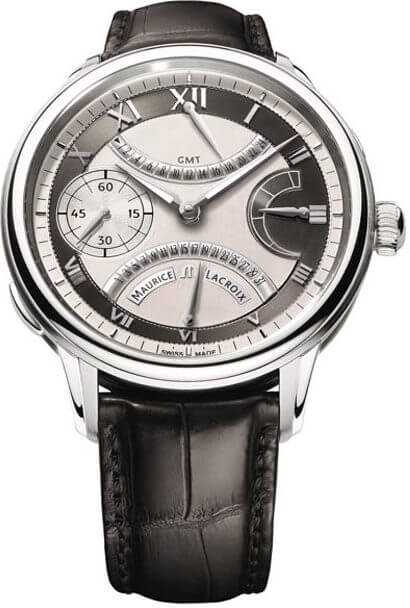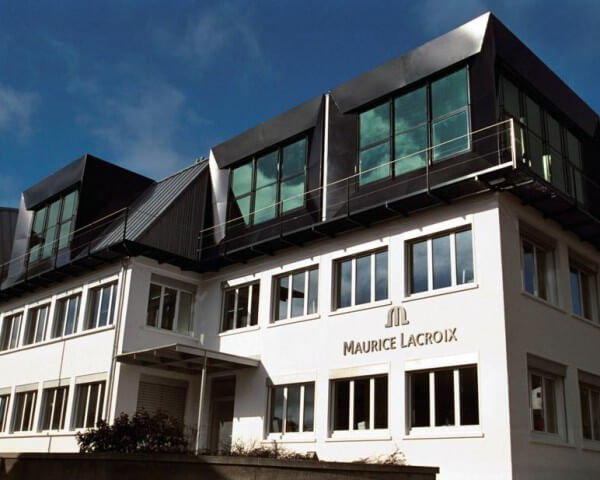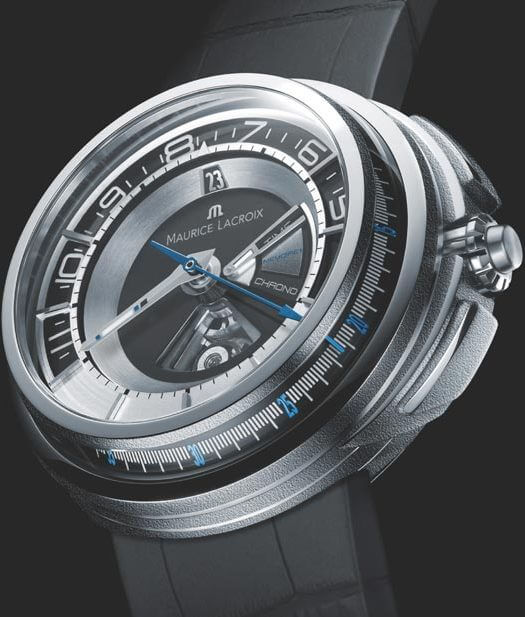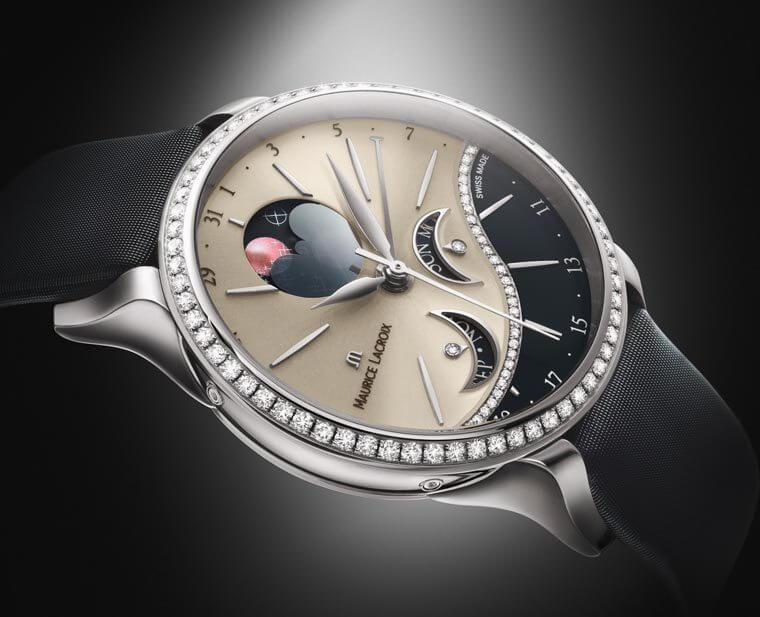At just turned 30 – a milestone celebrated in 2005 – Maurice Lacroix is on sparkling form. Spurred on by a dynamic management team, in October 2007 the firm proudly cut the ribbon at its new production facilities in Montfaucon while preparing several major launches, beginning with Mémoire 1, its star product unveiled at Baselworld 2008, and several other noteworthy pieces in the brand’s iconic Masterpiece collection, fitted with Maurice Lacroix manufacture complication movements. The brand has also completed its range with Starside, a new collection for women who know what they want. No doubt about it: Maurice Lacroix, whose headquarters have never moved from Saignelégier, is intent on giving itself the means to achieve its ambitions.

Germany as its main market
It’s been over a year since the brand embarked on its first in-house developments (see box), directing its efforts towards the high end of the market and mechanical complications. One of the best examples is an exceptional chronograph model, Mémoire 1, which can claim the title of one of the most complicated watches ever made. Its movement, an assembly of 604 parts, was entirely designed and developed at Maurice Lacroix’s own Atelier. To describe Mémoire 1 in a few words, it switches between the two functions of time and chrono without losing track of either indication, even when the chronograph is running. A little like TAG Heuer’s Calibre S but with one important difference: Mémoire 1 is entirely mechanical and, as its name suggests, has a memory. Another distinguishing feature are the nine chronograph hearts for which Maurice Lacroix has filed several patents. Clearly this was the flagship model everyone was talking about this spring, although there can be little doubt the firm has more exploits up its sleeve.
With some 220 staff in 60 countries, Maurice Lacroix has been steadily growing, backed by the 3,000 specialist points of sale that represent the brand. Each year, around 120,000 watches leave the assembly workshops in Saignelégier. While Germany remains the brand’s strongest market, with high-end positioning and prices around the average, the US is proving to be another fast-growing territory.
The first signs of vertical integration
The opening of its production unit in Montfaucon, with 400 sq m and for the moment eight qualified staff, should enable Maurice Lacroix to press ahead with vertical integration. This Atelier masters precision-turning, milling and finishing. Assembly is carried out on-site or at the headquarters in Saignelégier. Heavy investments by the brand in its case factory, acquired in 1989, and assembly workshops mean they are now some of the most modern facilities in the branch.
When summing up the Maurice Lacroix philosophy, it should be said that the brand intends carrying on a tradition of quality watchmaking. If success is on the cards then Maurice Lacroix is determined to deal itself a winning hand and be the maker of tomorrow’s classic watches.

The milestone years
In 1961, Zurich-based Desco von Schulthess AG bought an assembly workshop in the Jura town of Saignelégier to produce private-label watches for the Swiss and international markets. In 1975, the enterprise took on a new dimension when the first Maurice Lacroix watch was launched in Austria. A year later and the brand moved into the Spanish market. In 1980 it set up its first distribution company in Germany. Two decades after the launch of its first watch, Maurice Lacroix conquered the North-American market.
The Far East and South Pacific sales networks were restructured and extended in 1995, with Desco subsidiaries selling Maurice Lacroix watches in Japan, Hong Kong, Singapore, Malaysia and Thailand. In 1994-95, several million Swiss francs were invested to modernise and extend the assembly workshops in Saignelégier. The year 2001 marked a turning-point when Philippe C. Merk took over as CEO. On October 1st, Maurice Lacroix SA went from being a division of Desco von Schulthess AG to an autonomous legal entity. New investments were made to further develop the brand’s assembly workshops. A museum showing the treasures of the magnificent Masterpiece collection, launched in 1990, was opened in Saignelégier in 2003. The following year saw the first brand ambassadors, led by Roger Federer.
2005 was a milestone year for staff who celebrated the 30th anniversary of Maurice Lacroix and the 15th anniversary of the Masterpiece collection. The Calibre ML 106 became the company’s first manufacture movement in 2006, inside the new Masterpiece Le Chronographe. And in 2007, Maurice Lacroix launched its famous Mémoire 1 as a world-first exclusive in Shanghai.















